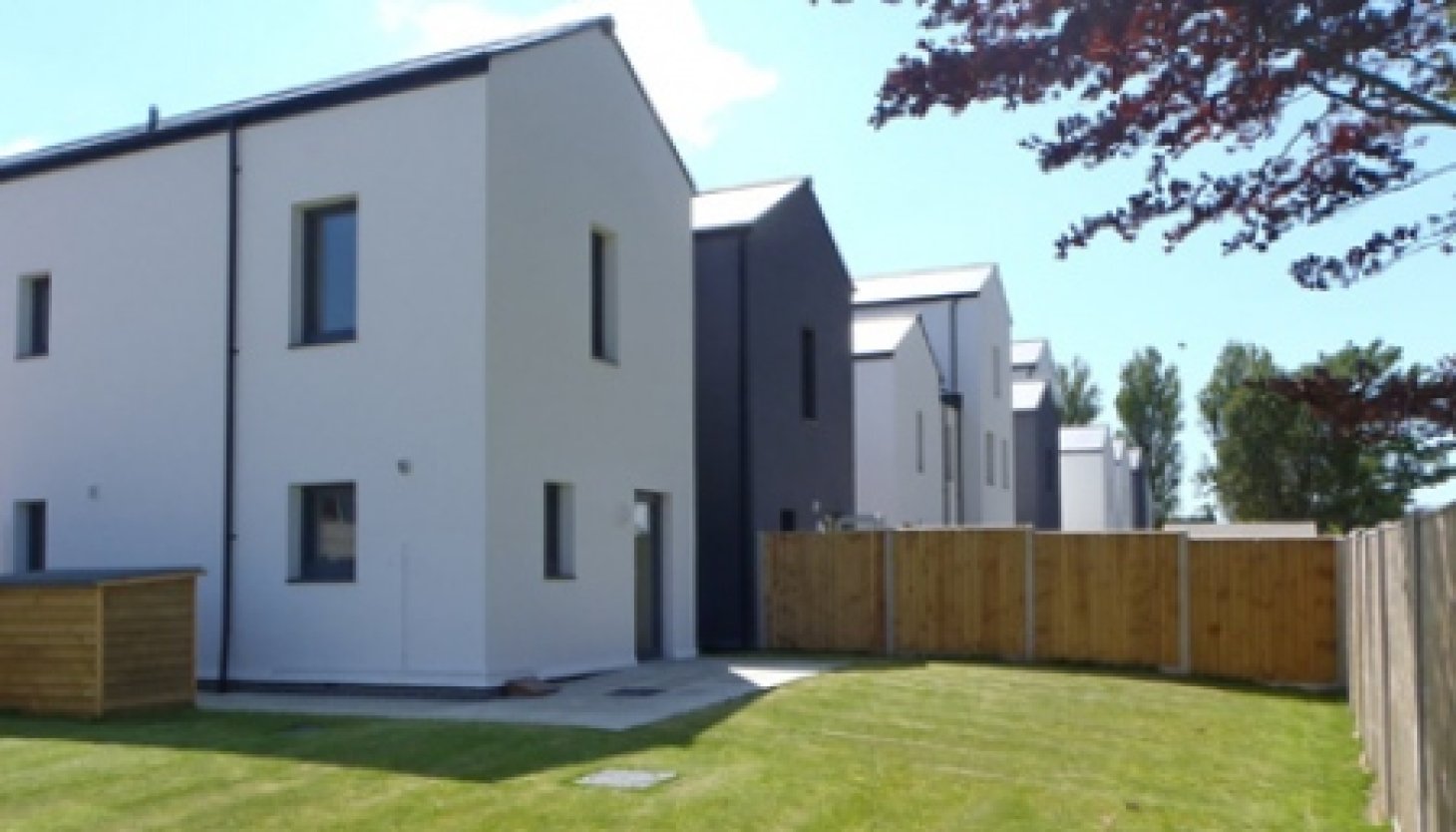
H+H Celcon Plus Blocks and Thin-Joint System using Celfix Mortar have been used in Southern Housing Group’s first ever scheme built to the PassivHaus standards, Cameron Close on the Isle of Wight.
Built on a 1.5 acre site, this £4.2million development of 16 semi-detached family houses and 12 sheltered apartments has been built according to the PassivHaus principle of reducing the need for and cost of space heating and cooling while keeping homes well insulated.
Speaking about the development, Alan Townshend, Development Director at Southern Housing Group said: “We decided to make Cameron Close a PassivHaus development as it best meets the Group’s sustainability objectives without the need to provide expensive renewable technology.”
The 500mm solid walls in all of the homes were constructed using 300mm Celcon Plus Blocks and the H+H Thin-Joint System. Externally the walls are insulated with phenolic insulation boards and finished in white render; internally the block walls have a parge coat, then a services void and finally a plasterboard lining. Separating walls were formed of two 100mm leaves of H+H aircrete blocks, again using thin-joint.
This ‘fabric-first’ approach requires a high level of attention to detail to be given to both design and construction in order to deliver high-quality and sustainable homes for residents.
On the use of H+H aircrete blocks and the Thin-Joint System, Andrew Ogorzalek, Director of PCKO Architects, the practice behind the development said: “Thin-joint proved to be a very smart method of construction. It provided a clean, nice, fast build.”
Agreeing with this, David Harris, Director of Stoneham Construction, the contractors for the scheme, said: “In our view, PassivHaus is made simpler when constructed from masonry, rather than timber frame. We worked very closely with H+H who were exceptionally helpful. At the time of project planning aircrete blocks were in short supply but H+H pulled out all the stops to ensure that our important project was supplied. We had not used thin-joint before but that did not pose any problems.”
The PassivHaus Institute has already pre-certified all fixtures and fittings to ensure that the required heating and primary energy limits are met; the homes are currently going through the PassivHaus certification process.
When asked about the certification of the block work, Karl Parsons, Passivhaus designer at Warm who was instrumental to the project said: “There is no need for Passivhaus certification for a type of blockwork per se – it is like timber, an element that is part of the structure. In some ways block is more straightforward to get airtight.”
Southern Housing Group will carry out post-occupancy monitoring to find out how much energy residents are using and explore how this ‘fabric-first’ approach could be replicated in future schemes.
Looking to the future, Andrew Hulmes, Area Development Manager at Southern Housing Group, said: “There are several elements of this project that we would happily and readily import to other developments irrespective of certification, primarily the specification of H+H’s Thin-Joint System and the mechanical ventilation and heat recovery system.”